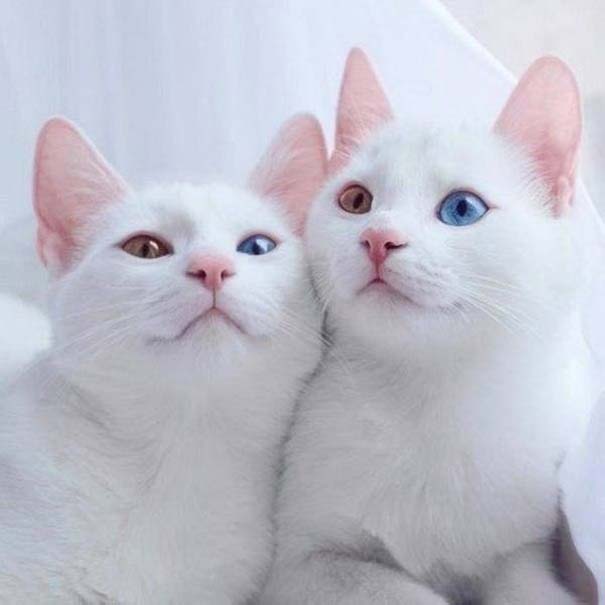
An odd-eyed cat is a cat with one blue eye and one eye either green, yellow, or brown. This is a feline form of complete heterochromia,a condition that occurs in some other animals. The condition most commonly affects white-colored cats, but may be found in a cat of any color, provided that it possesses the white spotting gene. 1. Cat eye colors start with the iris The colored area around the pupil of the eye is called the iris. The iris has two layers, the stroma and the epithelium. Both of these layers contain pigment-producing cells called melanocytes. In the stroma, those melanocytes are loosely arranged, and in the epithelium, they are more tightly packed. 2. It’s all about melanin The pigment produced by the melanocytes is called melanin. A while back I wrote an article on the genetics of cat fur color, in which I explained that melanin plays an important role in determining how dark your cat’s fur coat will be. The same thing is true with cats’ eyes: The more melanocytes there are in your cat’s irises, the darker their color will be. But cats don’t get brown or black eyes like people do; the darkest color you’ll see in a cat’s eyes is a deep, rich copper. 3. A cat’s eye-color intensity is linked to melanocyte activity When the melanin-producing cells are very active, a cat’s eye color will become more intense. For example, a cat with a medium amount of highly active melanocytes will have bright golden-yellow eyes, but a cat with a medium amount of less active melanocytes may have pale lemon-yellow eyes. 4. Purebred cats tend to have more intense eye colors Because purebred cats are bred to meet a specific breed standard, which often includes eye color, breeders select for cats that have more intense colors or particular colors. For example, the Bombay cat breed standard requires copper-colored eyes; and the Tonkinese has aqua-colored eyes.